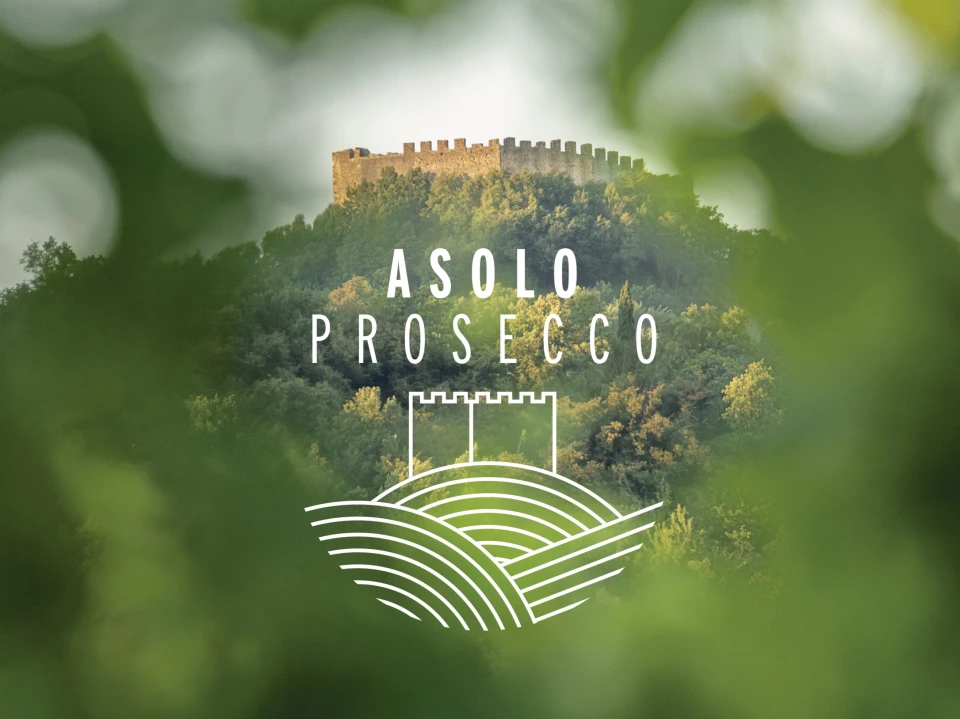Prosecco is so mass produced that it’s important to understand the regions that are making quality Prosecco including Asolo and its neighbor Conegliano Valdobbiadene. Today we focus on the Prosecco wines of Asolo that are named after the town itself within the Treviso province of the Veneto region in northeastern Italy.
Located only about 1 hour north of Venice, this wine region has a unique geography setting. It sits at the foothills of Monte Grappa and the Dolomite mountain range to the north, but is also not too distant from the Adriatic Sea. These factors influence its climate creating a balance between a continental and Mediterranean climate with winds from both the north and south.
Asolo’s Prosecco wine producing history stems from a production of bulk wines as well as selling the wines locally. Since 2012 the area has increased plantings due to zonation research they conducted that identified the best areas for planting. That along with producers from the small family run businesses that occupy the region paying strong attention to producing quality wines have changed the vision of Asolo Prosecco wines. Although the market for Prosecco has grown tremendously in recent years, production in Asolo has always been there well before the Prosecco craze. It is actually the fourth biggest DOCG sparkling wine producing region in Italy.
Asolo Prosecco wines became a DOCG in 2009 and in 2014 was the first to start the Extra Brut category for Prosecco wines that are low in sugar and full of fruit. The wines of Asolo are defined by their distinct freshness in their bubbles and their salty, mineral finish. The wines are made from a minimum of 85% Glera along with up to 15% of other local non aromatic grape varieties to include Verdiso, Perera, Glera Lunga and Bianchetta Trevigiana.
The Wines
The 2022 LeTerre Asolo Prosecco Superiore DOCG Millesimato Dry was brightly straw coloerd with aromas of apple, pear and citrus. Crisp with soft bubbles and notes of lemon with a hint of honey ending with a salty finish. ABV 11%.
The 2022 Bele Casel Asolo Prosecco Superiore DOCG Extra Dry was a brilliant pale straw color. There were aromas of citrus, apple and wet stone. On the palate the wine was crisp with bubbles tingling the tip of the tongue. It showed nice fruit with juicy tart apple and citrus with a lingering finish.
The 2022 Case Paolin “Col Fondo” Asolo Prosecco Superiore DOCG Sui Lieviti Brut Nature was an interesting wine to try. Not my personal preference, but everyone has their own preferred styles. A great learning experience on col fondo wines though that I’d like to share.
What is col fondo? Col fondo is when the wine produced in the traditional or classic method where the secondary fermentation takes place in the bottle and it not disgorged. How does col fondo differ from pet nat (if you are familiar with those wines)? Pet nat wines are bottled before fermentation is complete. The “sui lieviti” on the labels translates to “with the bottom” since the wine is remaining with the natural yeasts or lees and sediment on the bottom of the bottle.
Back to the wine, this wine is made from organic grapes that are certified organic. The grapes are grown on the slopes of Montello in their oldest vineyard, about 30 years old. The wine spends 15-18 hours on the skins and is fermented in steel tanks with secondary fermentation in the bottle. Pale straw colored with a greenish tinge and slight haziness to the wine from the “sui lieviti”. Floral aromas with citrus and yeasty notes. Bone dry, light-bodied, crisp and clearn with mouthwatering acidity, citrus pith notes that seemed slightly bitter to me with minerality on the finish.




